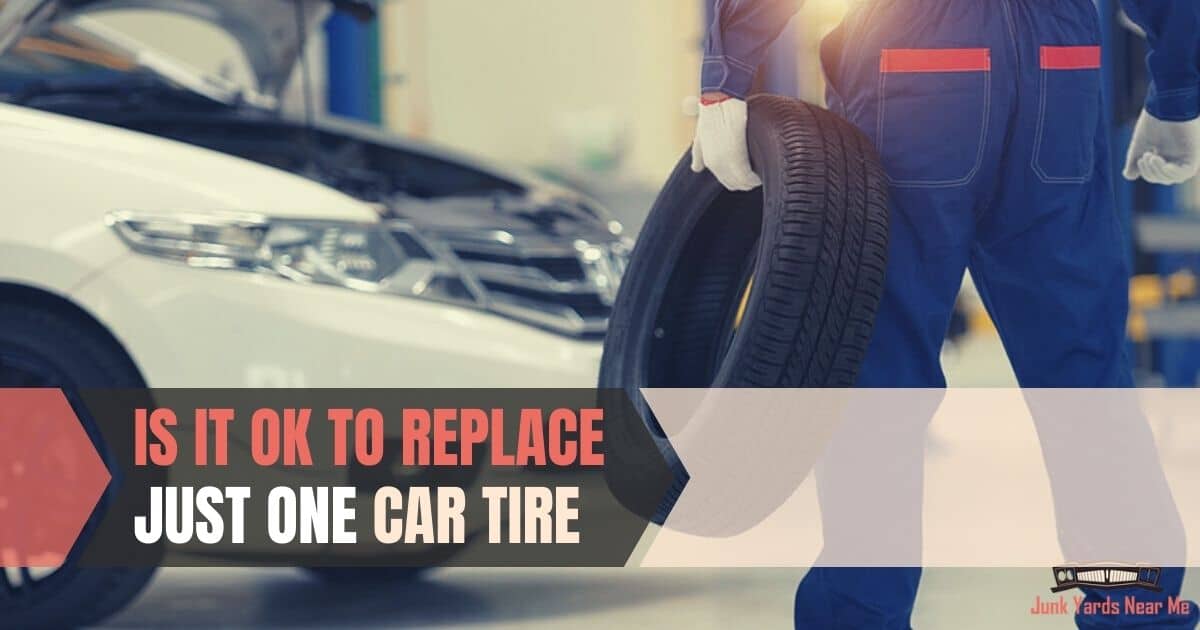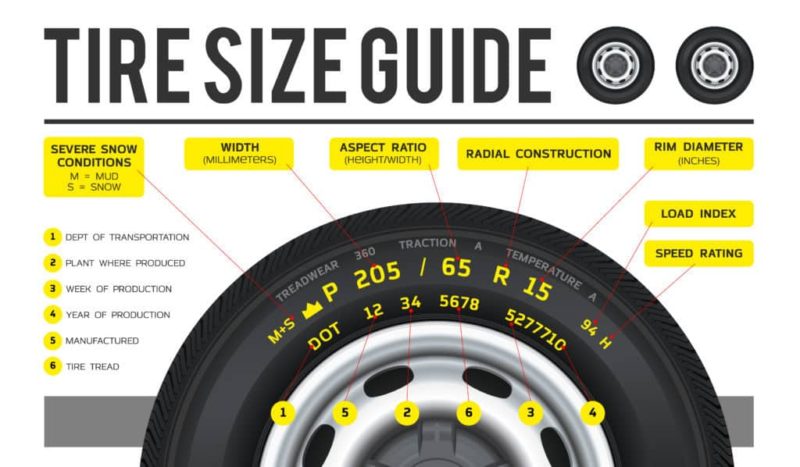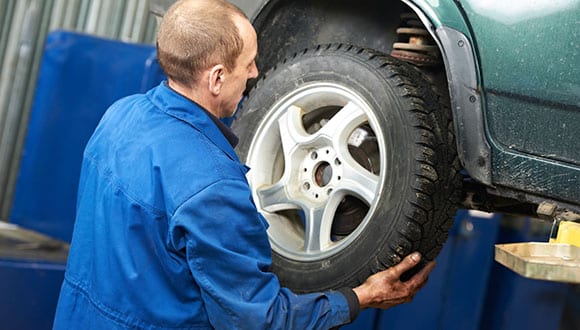A flat tire is something that every driver has to deal with at least once in their life. And, if you love to be independent, you’ve probably learned how to change a flat tire. Undoubtedly, this little piece of knowledge can get you out of a tricky situation, get you home, or to a repair shop. A common question we get asked is: “Is it ok to replace one tire“?
When making this choice, there is a lot to keep into consideration, especially in terms of safety, comfort, and driving experience. Here’s all you need to know about changing just one of your car’s tires…
Replace One Tire in Emergency Situations…
In an emergency, replacing one tire is certainly ok. Using your spare for a short time is normal up to 50 miles. Once your to a safe place you need to consider repairing your tire that was damaged or replacing it. Many times manufacturers recommend replacing all 4 tires if you need to replace one. If in a pinch you can only afford one tire, that should be fine as a temporary solution as long as the size and load capacity meet the specs of your vehicle.
Why Is It Bad To Replace Just One Tire?
Changing just one tire comes with significant challenges. The new tire will have a different tread depth compared to the other tires, which will translate into different braking and accelerating performances. Because of this, you might feel that driving becomes an uncomfortable, out-of-balance experience that also presents stability, safety, and performance issues.
In some cases, the car manufacturer or local regulations will not allow you to change just one tire. There are guidelines to follow when changing fewer than four tires on certain types. For example, when it comes to run flats, in most cases manufacturers say you can’t even repair one, it must be replaced.
Even if you invest in regular car and tire maintenance, you might need to replace just one of the tires. The truth is though, you should technically replace all four. For most people the cost of replacing four tires is a challenge. In the event you can’t do four, consider replacing two and out the tires with the best treads on the rear.
Considerations To Make to Replace One Tire
There might be some reasons for changing just one tire. For example, the difference between the tire that needs changing and the rest of them is minimal (something that happens if a new tire becomes punctured).
Or, you might have some time- or financial-related constraints to keep in mind. Whatever the reasons behind your decisions are, you should always make sure that your vehicle is safe to drive by consulting an expert tire dealer and checking the car manufacturer’s instructions.
Another good time to just change one tire is when you are returning a vehicle at the end of a lease. Why pay for four tires, when you can just pay for one.
Here are a few considerations to make when changing just one tire.
Matching Your Tire Types and Getting the Right Size
If your only option for a tire replacement is a directional tire, it needs to be mounted facing the correct direction. You should also not mix all season tires and winter tires or use tires from different performance categories. You need a tire that is similar to the other three tires on the vehicle.
Also you should never mix and match tire sizes and load capacity ratings. Check your sidewall for your tire codes to ensure your replacement tire is the same specs as the others.
Front And Rear Wheel Drive Vehicles
Front-wheel drive vehicles and rear-wheel drive vehicles rely on two tires to guarantee safety and traction on the road.
Here are some general rules to follow:
- When changing just one tire, pair it with the tire that has the deepest tread to minimize differences. Then, place both tires on the rear axle.
- If replacing two tires only, place them on the rear axle.
- The new tires should be mounted on the rear axle to increase road safety and reduce the risk of hydroplaning.
Four-Wheel And All-Wheel Drive Vehicles
Four-wheel-drive and all-wheel-drive vehicles rely on all four wheels to increase traction, safety, and maneuverability on the road. However, in these vehicles, it is important that all tires are identical, so as to prevent glitches in the drivetrain. If you drive one of these vehicles, you should consider changing all four of the tires.
When Do Tires Need Replacement?
On a set of brand new tires, the average tread ranges from 10/32 inch to 11/32 inch. As you drive the tread of the tires will flatten and reach minimal depths of 2/32. That is considered bald. When this happens, it is time to change your tires. A bald tire will not pass a safety inspection and can represent a substantial risk. In fact, bald tires can lose traction and significantly decrease safety especially in wet conditions.
Another risk that comes with worn-down tires is the increased stopping times and distances. In fact, with limited road traction, your car will need much longer to come to a stop, which can increase your chances of road accidents.
All of these reasons are valid to finally decide to change your tires. But how is it possible that only one of your tires is much more worn down than the rest of them? Here are a few possible reasons:
- You forgot to rotate the tires and you are burning through the front tires.
- A tire might have been subjected to a pressure leak or blowout.
- One of the tires might have been underinflated or overinflated – which can cause damage to a certain area of the tire and make it more susceptible to hits.
- A tire has deteriorated or dry rotted.
- One of your tires has been slashed or punctured.
Is it Ok to Get a Used Tire?
In many cases, I would say yes. My favorite time to put on one used tire is when you get a flat right before a lease is due back. Used tires are great options in many cases as long as they have adequate tread and can pass a safety inspection.
Replace One Tire – Conclusion
Replacing one tire is fine in an emergency. For better traction, safety, and performance you should aim to replace all four. In the event you can’t afford too, replacing two is a better option then just replacing one. Just ensure you understand the impacts and tradeoffs of doing so. You should also keep in mind whether you have a front, rear, or all wheel drive vehicle.


